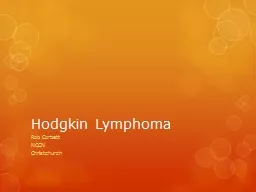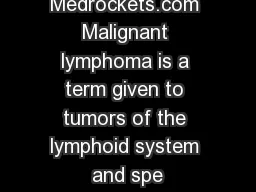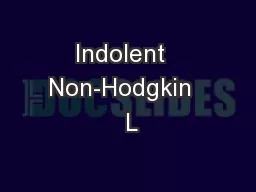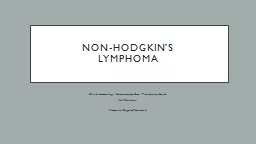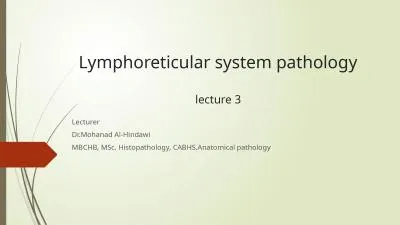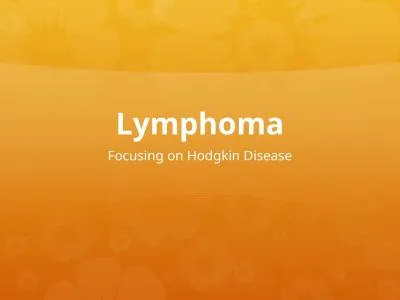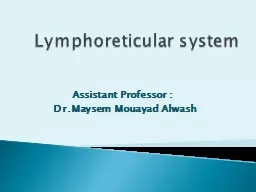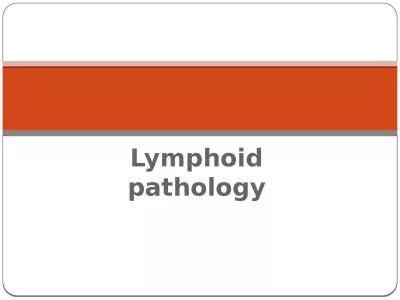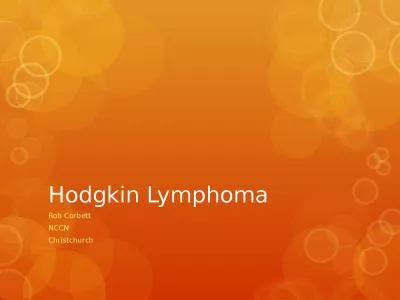PPT-Hodgkin Lymphoma in Children and
Author : maddoxjustin | Published Date : 2022-08-01
Adolescents Introduction Hodgkin Lymphoma HL was first described in seven patients in 1832 by Dr Thomas Hodgkin without the aid of a microscope The Reed Sternberg
Presentation Embed Code
Download Presentation
Download Presentation The PPT/PDF document "Hodgkin Lymphoma in Children and" is the property of its rightful owner. Permission is granted to download and print the materials on this website for personal, non-commercial use only, and to display it on your personal computer provided you do not modify the materials and that you retain all copyright notices contained in the materials. By downloading content from our website, you accept the terms of this agreement.
Hodgkin Lymphoma in Children and: Transcript
Download Rules Of Document
"Hodgkin Lymphoma in Children and"The content belongs to its owner. You may download and print it for personal use, without modification, and keep all copyright notices. By downloading, you agree to these terms.
Related Documents


